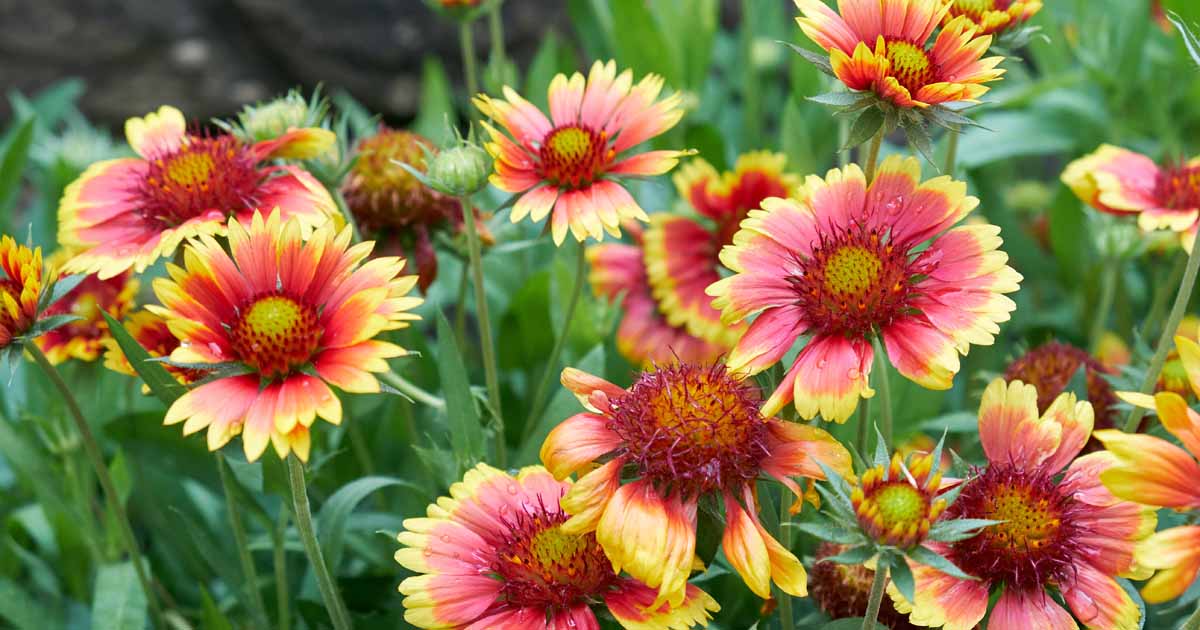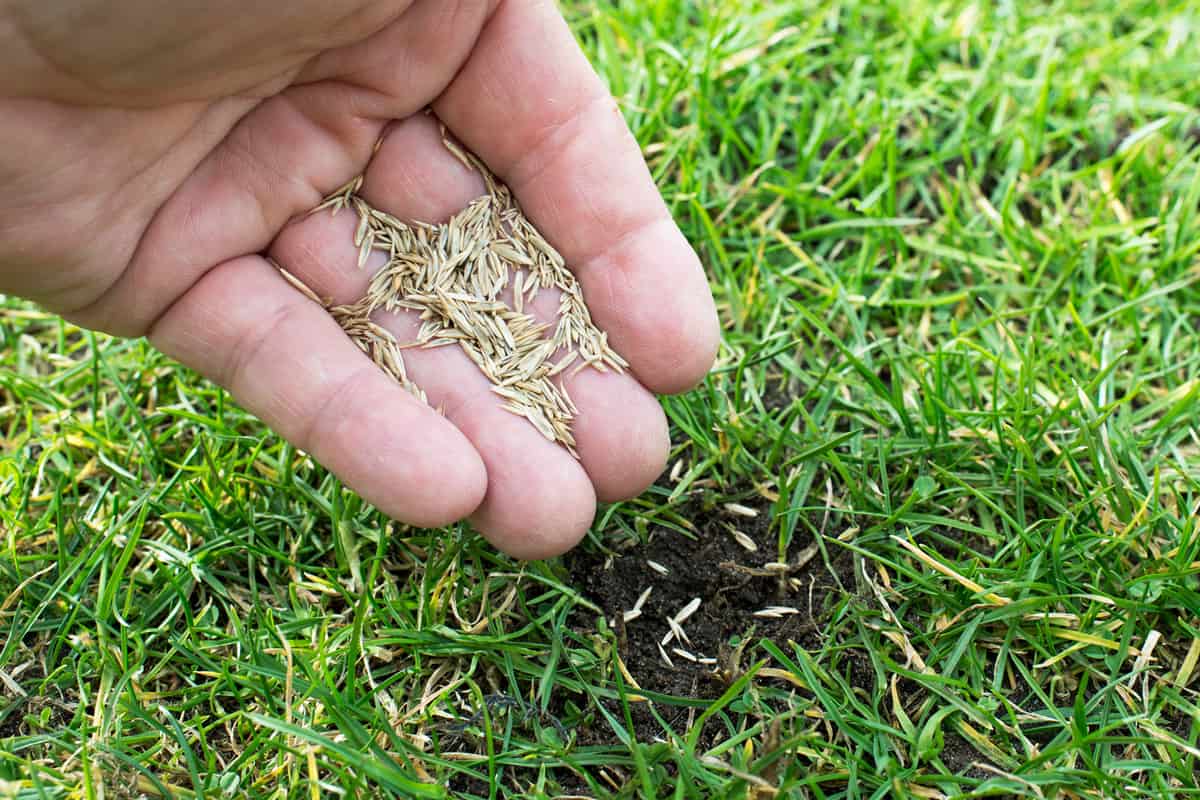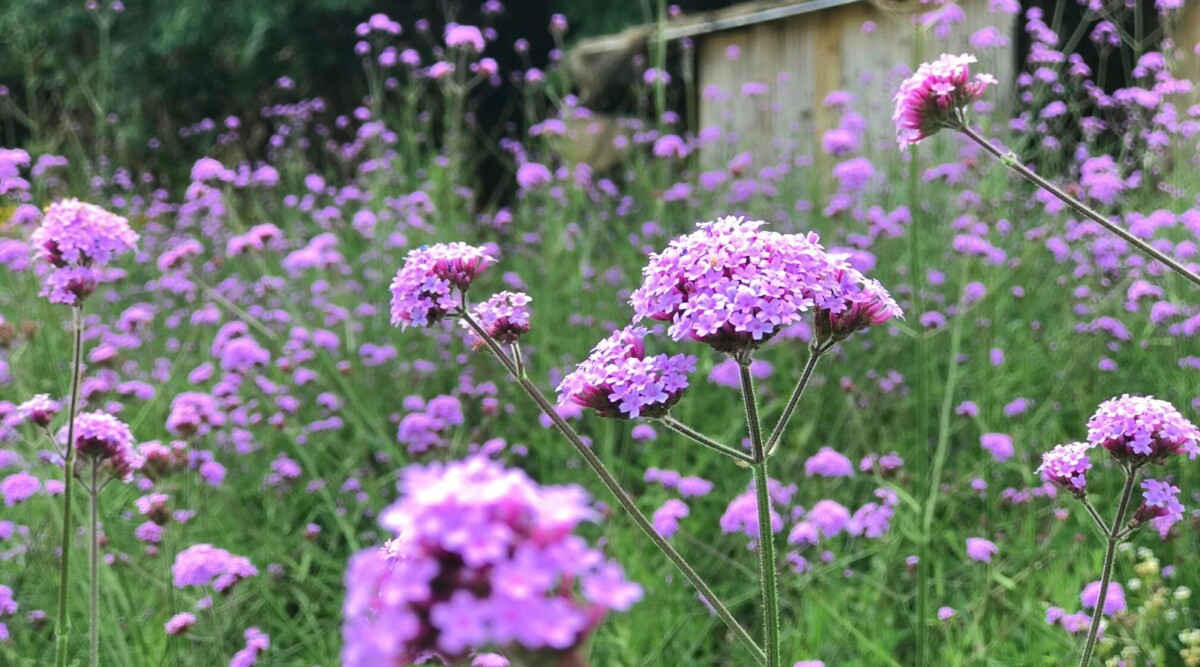Home>Garden Essentials>When To Plant Bonsai Seeds


Garden Essentials
When To Plant Bonsai Seeds
Modified: May 6, 2024
Discover when is the right time to plant bonsai seeds in your garden. Find tips and advice on when to start your bonsai journey and create a beautiful garden oasis.
(Many of the links in this article redirect to a specific reviewed product. Your purchase of these products through affiliate links helps to generate commission for Storables.com, at no extra cost. Learn more)
Introduction
Welcome to the wonderful world of bonsai gardening! If you have a love for plants and a desire to create something truly unique, then growing bonsai trees from seeds may be the perfect hobby for you. Bonsai is an ancient Japanese art form that involves cultivating miniature trees in containers. The process of growing a bonsai tree from seed allows you to have full control over the development and design of your tree, resulting in a truly personalized and rewarding experience.
Before you embark on your bonsai seed planting journey, it is important to understand the factors that need to be considered, the ideal time for planting, and how to properly care for your bonsai seeds. In this article, we will guide you through each step of the process and provide valuable insights to ensure your success.
So, whether you are a beginner or an experienced gardener looking to try something new, let’s dive into the world of bonsai seeds and discover when to plant them to achieve the best results.
Key Takeaways:
- Plant bonsai seeds in spring for best results. Consider species, climate, soil, lighting, and watering. Patience is key for successful bonsai gardening.
- Avoid common mistakes like poor quality seeds, improper soil, and overwatering. Enjoy the process and seek guidance from bonsai communities for success.
Read more: When To Plant Datura Seeds
Factors to Consider Before Planting Bonsai Seeds
Before you start planting bonsai seeds, there are several important factors that you need to take into consideration. These factors will greatly impact the success and growth of your bonsai tree. Here are some key points to keep in mind:
- Species: Consider the species of bonsai tree you want to grow from seeds. Different species have different growth requirements, so it’s important to choose the right species that aligns with your climate and gardening expertise.
- Climate: Understanding the climate in your region is crucial for successful bonsai seed planting. Some species require specific temperature ranges and environmental conditions to thrive. Research the specific needs of your chosen species and ensure that your climate can support their growth.
- Soil and Drainage: Bonsai trees have unique soil requirements. The soil should have good drainage properties to prevent waterlogged roots. Invest in a well-draining bonsai soil mix or create your own by combining organic materials like pine bark, perlite, and peat moss.
- Lighting: Bonsai trees generally require a good amount of sunlight to grow and thrive. Different species may have varying light requirements, so make sure to place your bonsai seeds in an area of your garden that gets the right amount of sunlight. Consider using grow lights if you have limited access to natural sunlight.
- Watering: Proper watering is essential for the health of your bonsai tree. Avoid overwatering or underwatering your bonsai seeds. The watering frequency and amount will depend on the species and soil conditions. Keep a close eye on the moisture levels and adjust accordingly.
- Container Selection: Choose a suitable container for your bonsai tree. The container should have adequate drainage holes and be the right size for the species you are growing. Bonsai pots are available in a variety of shapes, sizes, and materials, so choose one that complements your bonsai’s aesthetics.
By considering these factors before planting your bonsai seeds, you will give your tree the best chance at flourishing and becoming a beautiful and thriving miniature masterpiece.
Ideal Time for Planting Bonsai Seeds
Timing is crucial when it comes to planting bonsai seeds. Choosing the right season to sow your seeds can significantly impact their germination and growth rate. Here are some guidelines to help you determine the ideal time for planting bonsai seeds:
- Spring: Spring is generally considered the best time to plant bonsai seeds. The weather is becoming warmer, and the days are longer, providing optimum conditions for seed germination. Most tree species naturally experience growth and regeneration during this season, which makes it an ideal time to start your bonsai journey.
- Early Fall: Some species of bonsai trees, especially those that are native to cooler climates, can also be planted in early fall. The slightly cooler temperatures and more moderate weather in fall promote healthy root development and prevent stress on the young seedlings.
- Avoid Extreme Seasons: It’s generally recommended to avoid planting bonsai seeds during the peak summer or winter months. Extreme heat or cold can be detrimental to the delicate seedlings. If you live in an area with harsh summers or freezing winters, it’s best to wait until the weather becomes more favorable.
Keep in mind that the ideal planting time may vary depending on the species of bonsai tree you choose to grow. Research specific guidelines for your chosen species to ensure you are planting at the optimal time.
In addition to considering the season, you should also take your local climate into account. Some areas have longer or shorter growing seasons, so adjusting your planting time accordingly will maximize the chances of successful germination and healthy growth.
Remember, patience is key when it comes to growing bonsai trees. It takes time for the seedlings to develop and mature into beautiful miniature trees. By planting bonsai seeds at the ideal time, you are setting the stage for a rewarding and successful bonsai gardening experience.
Steps to Plant Bonsai Seeds
Planting bonsai seeds may seem intimidating at first, but with the right guidance, it can be a straightforward and enjoyable process. Follow these steps to ensure a successful start to your bonsai journey:
- Select High-Quality Seeds: Choose reputable sources to obtain high-quality bonsai seeds. Look for suppliers that specialize in bonsai cultivation and offer a wide range of tree species to choose from.
- Prepare the Containers: Select appropriately sized bonsai pots or containers with adequate drainage holes. Fill the containers with a well-draining bonsai soil mix or create your own by combining organic materials.
- Soak the Seeds: Some bonsai tree seeds may benefit from pre-soaking. This helps to soften the seed coat and improve germination rates. Follow the specific instructions for your chosen species.
- Plant the Seeds: Place the soaked or unsoaked seeds on the soil surface and gently press them down. Cover the seeds with a thin layer of soil or fine-grained sand to protect them and provide moisture retention.
- Water the Seeds: Use a gentle mist or a watering can with a fine nozzle to water the seeds gently. Avoid overwatering, as excessive moisture can lead to fungal growth. Keep the soil consistently moist but not waterlogged.
- Provide Optimal Growing Conditions: Place the containers in a well-lit area that receives the appropriate amount of sunlight for your chosen species. Monitor the temperature and humidity levels to ensure they are within the ideal range for seed germination.
- Be Patient: Germination times can vary depending on the species. Some seeds may sprout within a few weeks, while others may take several months. Be patient and provide ongoing care and attention to the seedlings.
- Gradual Transplantation: As the seedlings grow, it’s essential to gradually transition them to larger containers. This promotes root development and provides space for the tree to flourish.
Remember to consult specific growing guidelines for your chosen species, as different plants may have unique requirements. With proper care, patience, and attention to detail, you will soon witness the magic of your bonsai seeds sprouting and growing into beautiful miniature trees.
Plant bonsai seeds in the early spring or late fall for best results. This allows the seeds to take advantage of the optimal growing conditions and establish strong roots before the harsh conditions of summer or winter.
Care and Maintenance of Bonsai Seeds
Proper care and maintenance are essential for the healthy growth and development of your bonsai seeds. Follow these guidelines to ensure your bonsai trees thrive:
- Watering: Bonsai seeds have delicate root systems that require consistent moisture. Water your bonsai trees regularly, ensuring that the soil remains evenly moist. Avoid overwatering, as this can lead to root rot. Check the moisture level by inserting your finger about an inch deep into the soil – if it feels dry, it’s time to water.
- Fertilizing: Bonsai trees require regular fertilization to provide them with essential nutrients. Use a balanced liquid or slow-release fertilizer specifically formulated for bonsai trees. Follow the instructions for application rates and frequency. Avoid fertilizing newly sprouted bonsai seedlings until they have developed a stronger root system.
- Pruning: Regular pruning is crucial to maintain the desired shape and size of your bonsai tree. Prune the branches and roots as needed to encourage proper growth and prevent overcrowding. Use sharp, clean pruning tools to minimize damage and reduce the risk of disease transmission.
- Wiring: Wiring is an important technique used to shape the branches and trunk of bonsai trees. Use bonsai wire of appropriate thickness and apply it gently to guide the growth in the desired direction. Be careful not to wrap the wire too tightly to avoid damaging the branches.
- Protection from Extreme Weather: Bonsai trees are susceptible to extreme weather conditions. Protect your bonsai from frost during winter months by moving them indoors or providing adequate insulation. Similarly, shield them from scorching heat and strong winds during the summer months.
- Re-potting: As your bonsai seedlings grow, they will outgrow their initial containers. Re-potting is necessary to provide fresh soil and promote healthy root growth. Re-pot your bonsai every 2-3 years, pruning the roots and replacing the soil mix.
- Continued Observation: Regularly observe your bonsai trees for signs of pests, diseases, or any issues. Promptly address any problems that arise to prevent further damage. Keep an eye on the health and appearance of your bonsai trees to ensure they are thriving.
Bonsai gardening requires a balance between nurturing and shaping your plants. Remember to enjoy the process and take the time to appreciate the uniqueness and beauty of your bonsai trees. With proper care, your bonsai seeds will flourish into stunning miniature masterpieces.
Read more: When To Plant Blackberry Seeds
Common Mistakes to Avoid When Planting Bonsai Seeds
Planting bonsai seeds can be a rewarding and fulfilling experience, but it’s important to avoid common mistakes that could hinder the growth and health of your bonsai trees. Here are some key pitfalls to steer clear of:
- Using Poor Quality Seeds: Starting with high-quality seeds is essential for successful bonsai cultivation. Avoid purchasing seeds from unreliable sources, as they may have low viability or be mislabeled. Choose reputable suppliers that specialize in bonsai seeds to ensure the best results.
- Improper Soil Selection: Bonsai trees require well-draining soil to prevent waterlogging and root rot. Avoid using regular garden soil, as it may not provide the proper drainage. Invest in a bonsai soil mix or create your own by combining suitable organic materials.
- Overwatering or Underwatering: Finding the right balance of watering is crucial for the health of your bonsai seeds. Overwatering can lead to root rot, while underwatering can cause dehydration. Monitor the moisture levels by checking the soil regularly and adjust your watering frequency accordingly.
- Insufficient or Excessive Light: Light is vital for the growth and development of bonsai trees. Ensure that your bonsai seeds receive the appropriate amount of light based on their species. Insufficient light can lead to weak growth, while excessive light can cause leaf burn. Find a suitable location or use supplemental grow lights if necessary.
- Skipping Pre-Germination Steps: Some bonsai seeds benefit from pre-germination techniques such as soaking or scarification. Skipping these steps may result in low germination rates or slow growth. Follow the specific requirements for your chosen species to ensure the best chances of success.
- Ignoring Pruning and Training: Pruning and training are fundamental aspects of bonsai cultivation. Neglecting to prune your bonsai trees can lead to uncontrolled growth and a distorted appearance. Regularly shape and trim your bonsai to maintain its desired form and encourage proper branching.
- Improper Timing for Transplantation: Transplanting bonsai trees at the wrong time can shock their delicate root systems. Follow the appropriate timing guidelines for your specific species and consider factors such as growth patterns, recovery time, and the overall health of the tree.
- Not Researching Species-Specific Care: Different bonsai tree species have unique care requirements. It’s crucial to research and understand the specific needs of your chosen species. Factors such as light, temperature, humidity, and watering frequency can vary significantly.
By avoiding these common mistakes and implementing proper care and maintenance techniques, you will greatly increase your chances of success in growing healthy and thriving bonsai trees from seeds.
Conclusion
Congratulations! You have now gained valuable knowledge on when to plant bonsai seeds and how to care for them. By considering the important factors, choosing the ideal time for planting, following the steps correctly, and avoiding common mistakes, you are well on your way to nurturing your own beautiful bonsai trees.
Remember that bonsai gardening is a journey that requires patience, attention to detail, and a deep appreciation for the beauty of nature. It’s a process that allows you to connect with the natural world on a miniature scale, cultivating living artworks that reflect your vision and creativity.
As your bonsai trees grow and mature, don’t forget to enjoy the process. Take the time to observe and appreciate the unique characteristics of each tree. Enjoy the subtle changes in foliage, the graceful curves of the branches, and the tranquility that cultivating bonsai can bring.
Continue to provide the proper care and maintenance for your bonsai trees, adjusting as needed based on their specific needs. Remember that each bonsai tree is a living being, and it will respond to your care and attention.
Lastly, don’t hesitate to join bonsai communities and seek guidance from experienced enthusiasts. They can provide tips, share their experiences, and inspire your bonsai journey. Embrace the opportunity to learn, grow, and connect with fellow bonsai lovers.
Now, armed with the knowledge and guidance provided in this article, you are ready to start planting your own bonsai seeds. Embrace the beauty of this ancient art form and allow your creativity to shine through as you cultivate miniature living masterpieces.
Happy gardening and may your bonsai trees bring you many years of joy and tranquility!
Curious about what happens after you plant those bonsai seeds? Learn all about seed germination, including how long you'll need to wait for those seeds to sprout and start their journey towards becoming stunning bonsai trees. Our detailed guide provides invaluable insights and practical advice to ensure your seeds have the best start. Don't miss out on mastering this crucial step in your gardening adventure!
Frequently Asked Questions about When To Plant Bonsai Seeds
Was this page helpful?
At Storables.com, we guarantee accurate and reliable information. Our content, validated by Expert Board Contributors, is crafted following stringent Editorial Policies. We're committed to providing you with well-researched, expert-backed insights for all your informational needs.















0 thoughts on “When To Plant Bonsai Seeds”